Wellness Seat
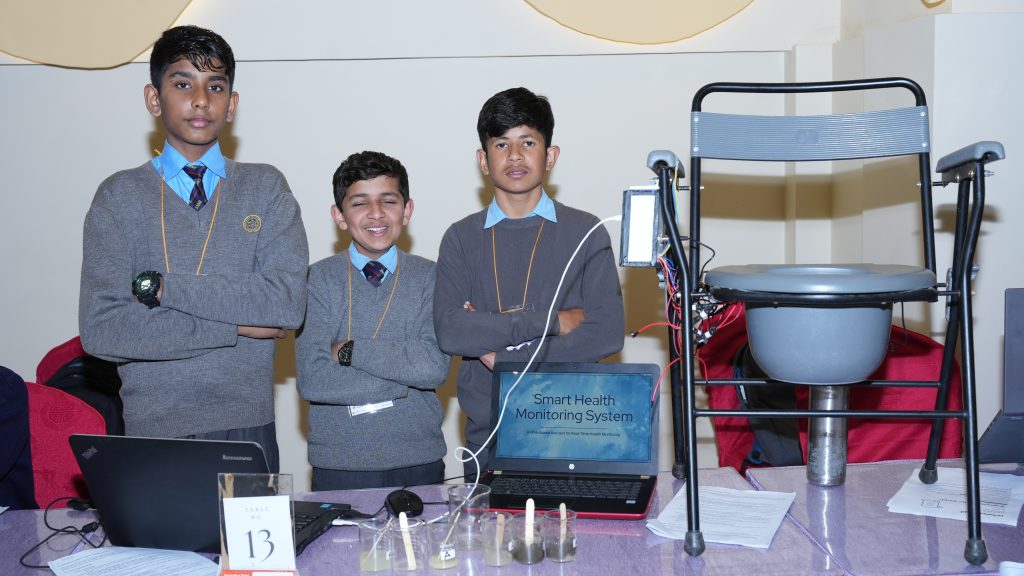
“Wellness Seat” is a smart toilet seat that passively tracks urine pH,
hydration, temperature, heart rate, and body temperature using various
sensors and an ESP32.Health data is sent wirelessly to a secure, mobile-
friendly dashboard for real-time monitoring by users or caregivers.
Pet Feeder
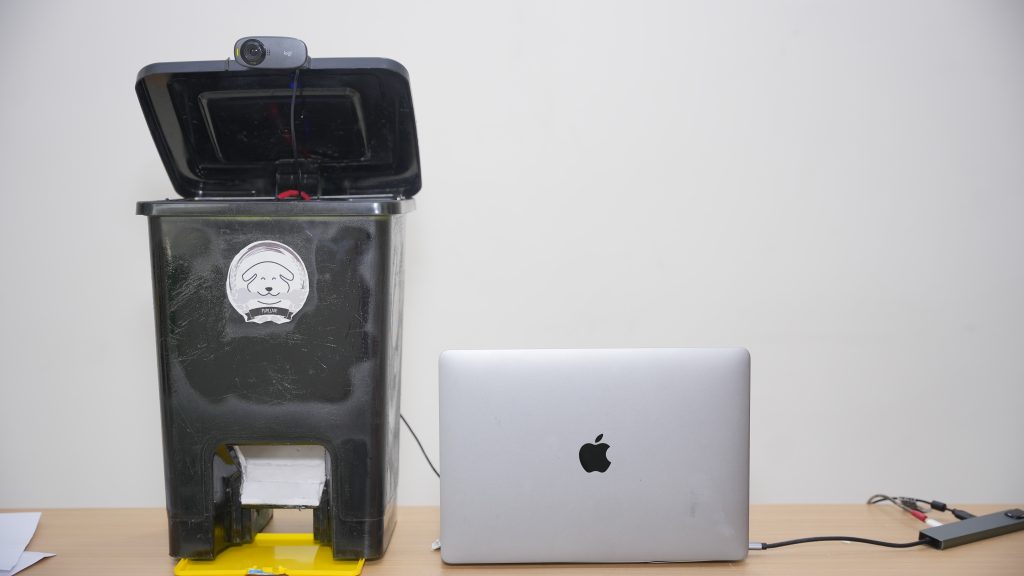
AI-Powered Smart Pet Feeder is an automatic system that detects the pet using a trained ML model and dispenses food at the right time. It ensures pets are fed on time and in the right amount — with zero human intervention.
Héliobot

Heliobot® is a revolutionary device designed to assist the visually impaired in their outdoor travel.
The cane offers the ability to:
Calculate the distance to obstacles.
Warn the user of an obstacle by emitting an audible alert and vibrations.
Send a distress short message with the location using a GSM and GPS module.
MedRobot

The MedRobot is a smart healthcare device designed to assist patients in managing their daily medication routines more effectively and safely. It uses cutting-edge facial recognition technology to accurately identify the patient and deliver timely reminders to take prescribed medications, reducing the risk of missed doses or medication errors. In addition to visual and auditory reminders, the device also sends SMS alerts to both patients and designated caregivers, ensuring continuous communication and monitoring. MedRobot is designed to adapt to the evolving needs of individuals with chronic illnesses by adjusting reminder schedules and providing personalized health insights. The system is complemented by an integrated smart bracelet that continuously monitors heart rate, offering real-time feedback and data tracking. For added safety and peace of mind, the bracelet also features a built-in SOS button that allows users to instantly share their real-time location with emergency contacts or healthcare providers in critical situations, enabling faster response and assistance when needed.
Smart Traffic Light System

This project presents a Smart Traffic Control System designed using Arduino technology to enhance traffic flow efficiency and safety at intersections. The system dynamically adjusts traffic light timings based on real-time traffic density and weather conditions. An ultrasonic sensor is used to detect vehicle density and determine optimal red and green light durations. Additionally, a DHT sensor monitors ambient temperature and humidity, while a rain sensor detects precipitation. Together, these sensors provide a responsive traffic management solution capable of adapting to environmental changes. The system aims to reduce congestion, improve driving safety during adverse weather, and lay the groundwork for future integration with smart city infrastructure.
Disaster Detection and Alert System

We are fourth-grade inventors who built a Disaster Detection and Warning System to keep our school safe. We wired an Arduino UNO to three sensors: a gyroscope for earthquakes, a water-level probe for floods, and an infrared flame sensor for fires. A pocket-size AI camera also counts how many friends are inside the building. When danger shows up, the Arduino acts like a superhero. It blasts a loud buzzer, draws a red-laser line around the hazard, and shines a green laser toward the nearest exit. At the same moment, it sends an emergency message to our teacher’s phone through IFTTT and records every event in an online spreadsheet. We picked these parts because they are cheap, easy to swap, and still run on a power bank during a blackout. Our dream is to share this idea with other schools so that even more children can stay safe.
Sea Cleaner

An autonomous robot designed to detect and collect waste from water bodies, monitor pollution levels, and transmit real-time data using IoT technology.
GeoFlame 6.0
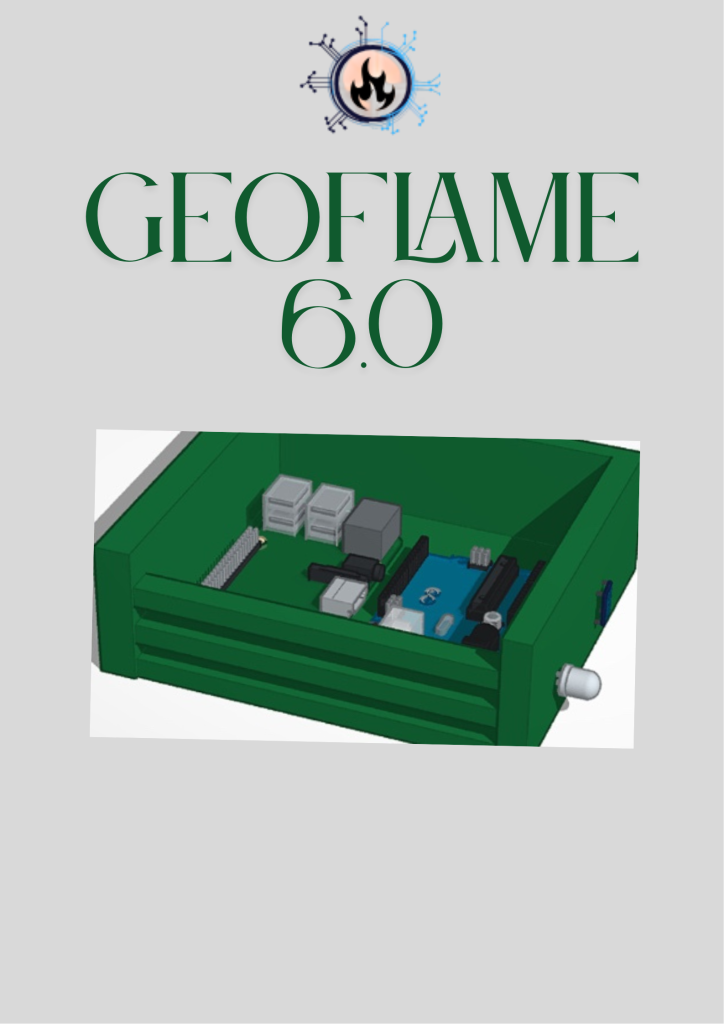
This project focuses on the development of an early warning sensor system capable of predicting the probability of fire outbreaks based on environmental parameters such as gas concentration and humidity levels. In addition to real-time data acquisition and processing, an artificial intelligence model was trained to generate predictive insights regarding fire occurrence. Furthermore, a virtual fire spread mapping system has been implemented to simulate how a potential fire could propagate across an area. The system is also supported by predefined fire scenarios that assist in classifying the type of fire based on sensor input and AI analysis. This integrated approach aims to enhance situational awareness and support early intervention efforts.
https://sites.google.com/posta.eyuboglu.k12.tr/geoflame/menu
My Accessible Home
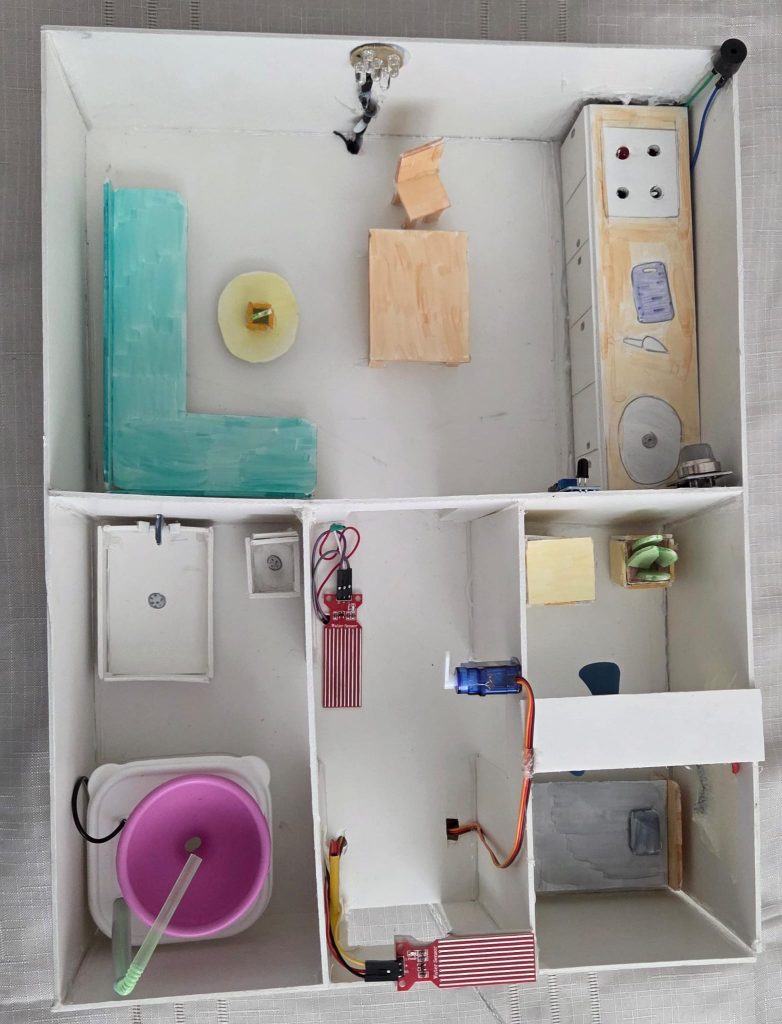
My Accessible Home is a plug-and-play smart-home retrofit created for visually impaired and mobility-restricted residents. Using an Arduino micro-controller, MQ-2 gas, IR flame and water-level sensors, and voice-recognition blocks in PictoBlox, the kit listens for simple commands such as “Lights off” or “I’m leaving” and instantly switches off lights, shuts solenoid valves and disconnects mains power through a relay module. If any sensor detects danger, the system speaks an alert and performs the same safety shutdown, preventing fires, flooding or poisoning even when the user cannot see warning cues. The modular design fits existing wiring without expensive renovation, costs less than a household appliance, and can be expanded with Wi-Fi logging or smart plugs. By combining low-cost hardware, accessible software and strong social impact, our project advances UN Sustainable Development Goal 3—Good Health and Well-Being—while giving its users greater independence, energy savings and peace of mind every day. Project web page: https://sites.google.com/view/robo-g-a-b
Smart Living Space
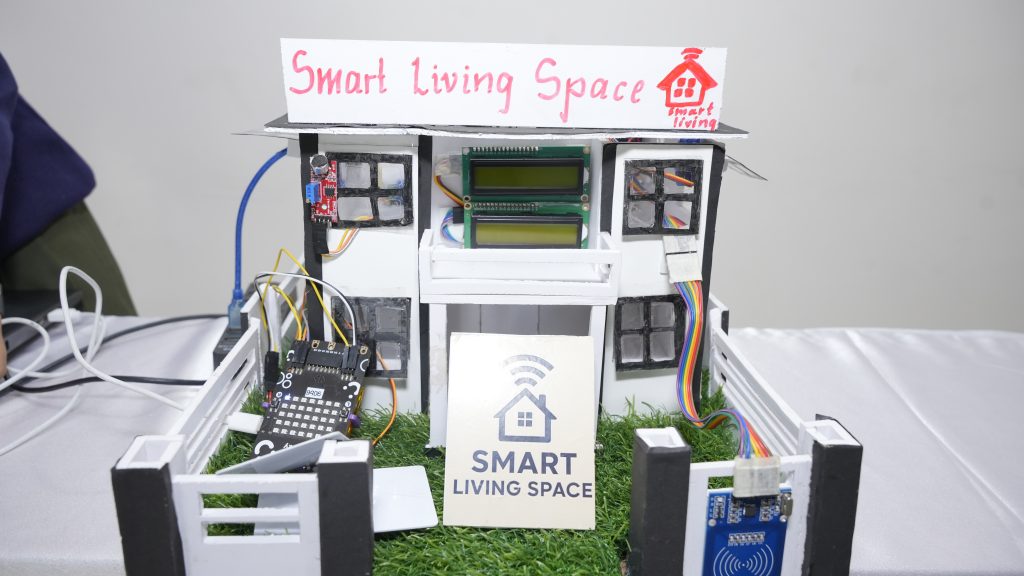
•The Smart Living Space project is designed to make homes safer, smarter, and more comfortable using affordable technology. It integrates two key innovations:
• Smoke Eater – detects gas or smoke leaks and acts immediately
• Smart Window – reacts to rain, sound, and user commands for better comfort and security
